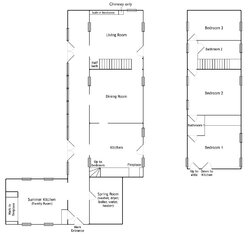par0thead151 said:
what benefits does shutting down the secondaries provide when burning down coals?
burning down coals fast to get max heat out of doing so, is the bane of my existence right now.
When burning down coals, secondary air does not contribute in any way to the combustion you want, it does nothing but cool down the stove and chimney. What is needed is underfire air, pulled through the bed of coals, just as a dedicated coal stove does.
My X33 stove has this. It has an air control which switches from overfire (airwash) to underfire air in any ratio desired. I added a simple cutoff to the secondary air inlet. When I need to burn down built-up coals, I cut off the secondaries, switch to underfire air, and use the air control to regulate the burn rate. The stove does not cool down much while burning down the coals.
The Quad, on the other hand, has a brick bottom so I have to do the same as others are describing. I can tell you, it's an un-elegant solution compared to what the Nestor Martin provides.


